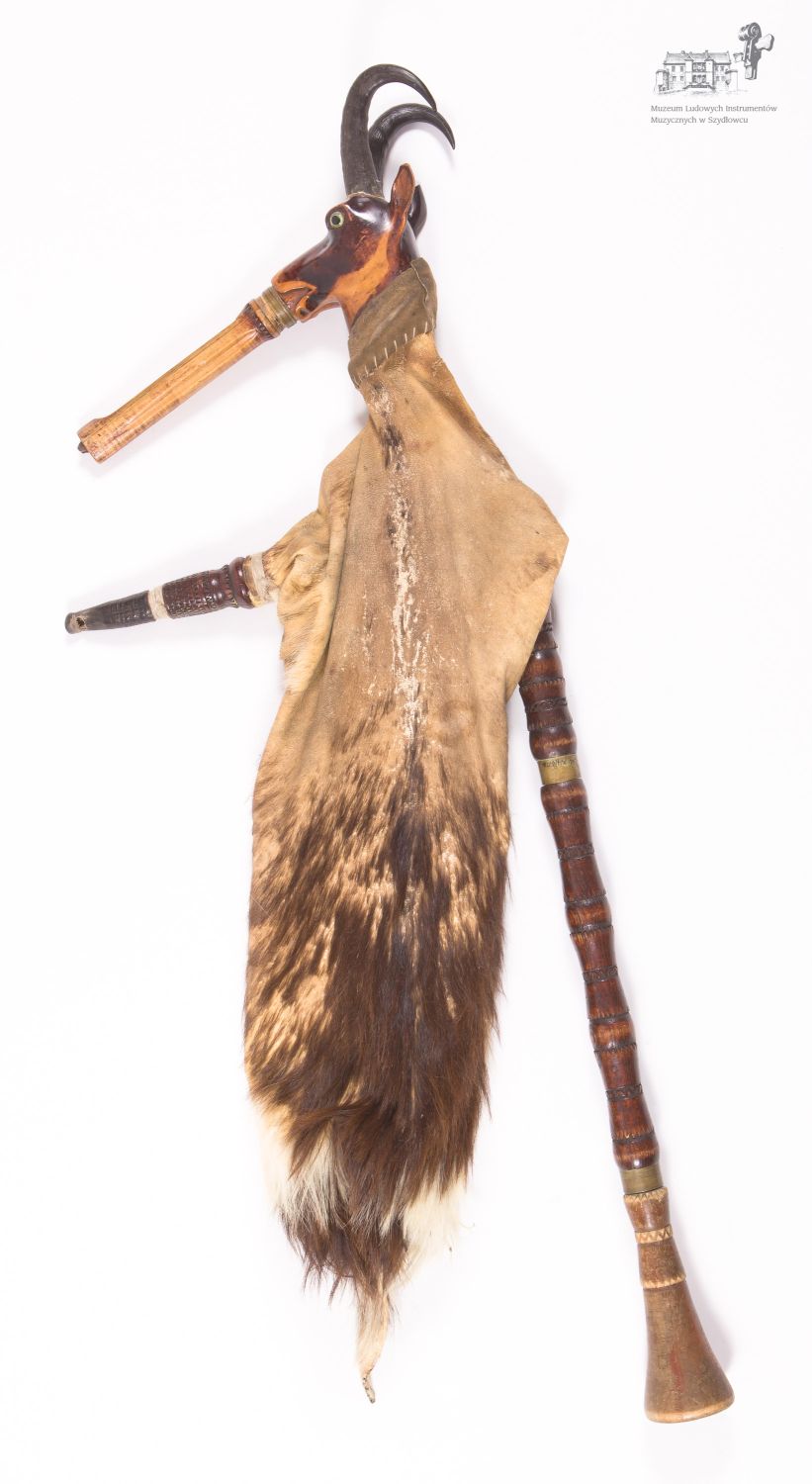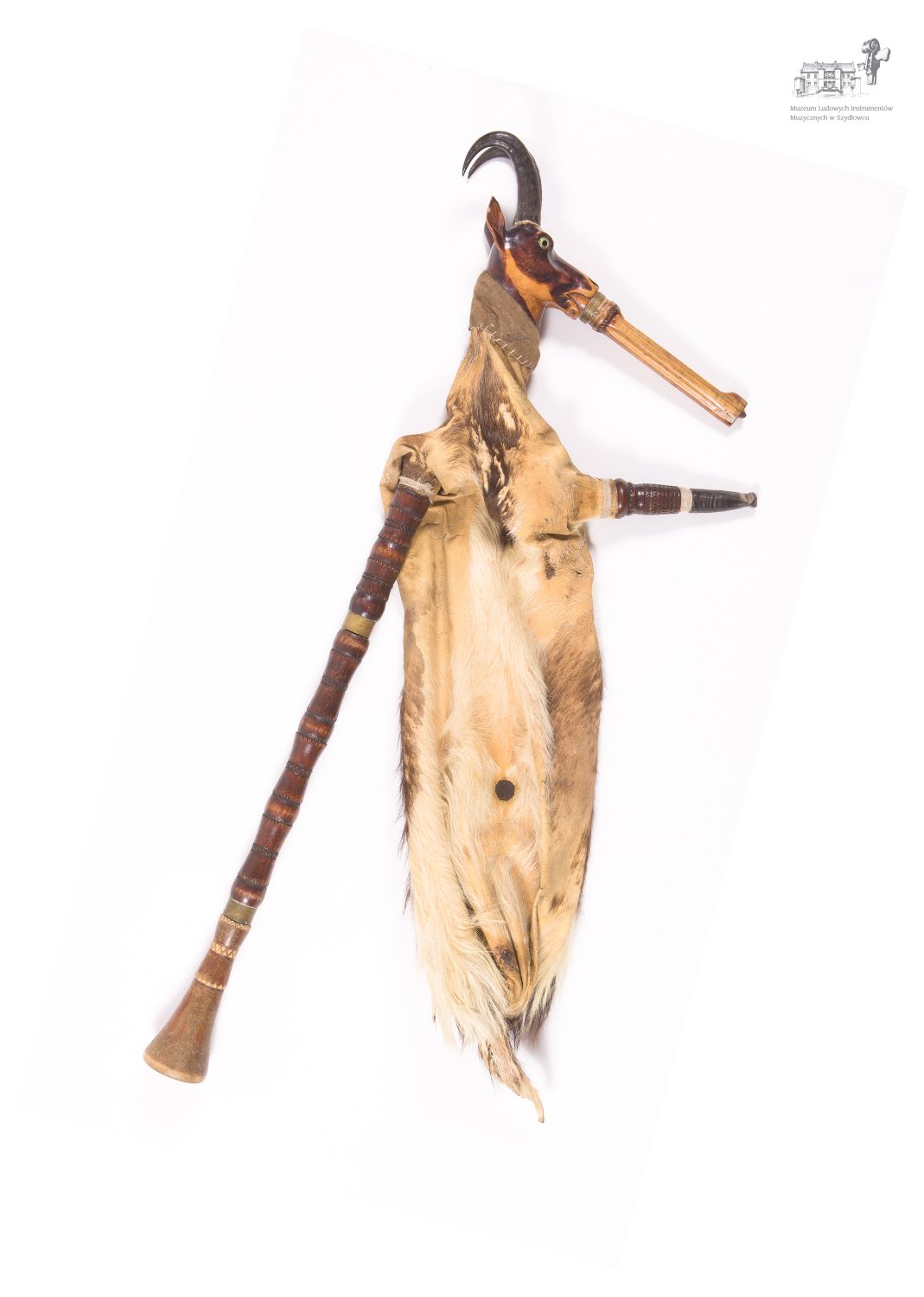bagpipe
Jan Karpiel Bułecka, Podhale bagpipe, Hanna Chowaniec Rybka, złóbcoki; rec. All the World's Mazurkas, Warsaw 2014; IMIT
bagpipe
Local name: koza (goat)Classification: 4 Aerophones / 42 Wind instruments proper / 422 Reedpipes / 422.2 Reedpipes with single reeds (clarinets) / 422.22 Sets of reedpipes with single reeds / 422.22-7+422.211-62 set of chanter, drones with cylindrical bore, chanter with fingerholes + single-reed drone with cylindrical bore, flexible air reservoir for all pipes
Maker: Bednarz Andrzej
Date: 1960-1965
Village / Town: Zakopane
Region: Carpathian area (Podhale)
Country: Poland
Owner: Museum of Folk Musical Instruments in Szydłowiec
Inventory number: MLIM/MS/1549
Description: a mouth blown instrument; four voices; has a short triple chanter-drone pipe (5+1 fingerholes) and a long drone pipe ending in a hyperbolic bell (of a clarinet type); all pipes with cylindrical bores; bag made from a goat's whole skin with hair on the outside
Decoration: the connector of the chanter-drone triple pipe and the bag has the shape of a goat head; pipes and mouthpiece embellished with turning profiles; geometrical motives engraved on the mouthpiece; drone pipe with metal rings
Measurements: triple pipe 170 mm, drone 632 mm, mouthpiece 188 mm, bag ca 640 mm
Materials: wood, leather, metal, horn, plastic
Sound compass, tuning: F: c': f': g' – a' – b♭'/b' – c'' – d'' (now stabilized, formerly different scales and tunings)
Performance practice: formerly played solo (by shepherds, wandering musicians), nowadays in folk revival, sometimes included in Podhale bands. The ability to build and play the Podhale bagpipe, or goat, were included on the National List of Intangible Cultural Heritage.
Catalog card by: MLIM / Zbigniew J. Przerembski
Sabała and Zbójnickie Melodies; Tomasz Skupień (b. 1955, Zakopane), Podhale bagpipe; rec. Zakopane 1976; Sources of Polish Folk Music
<< Back












